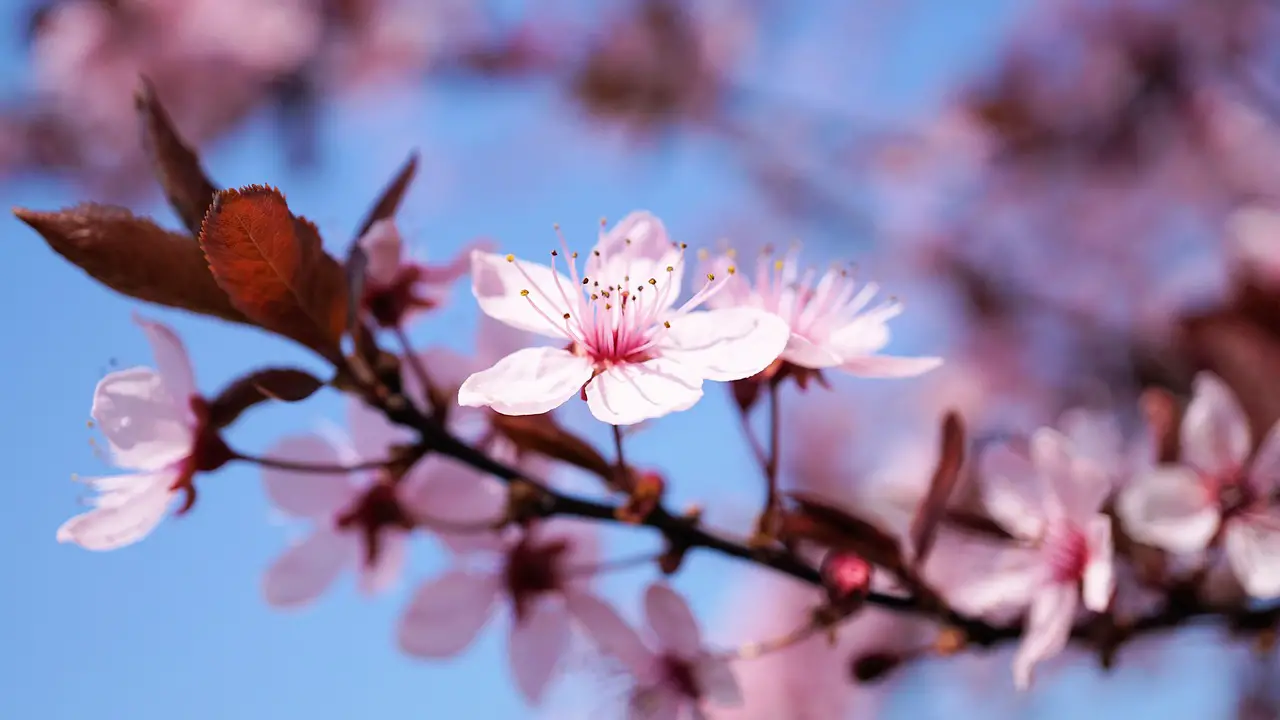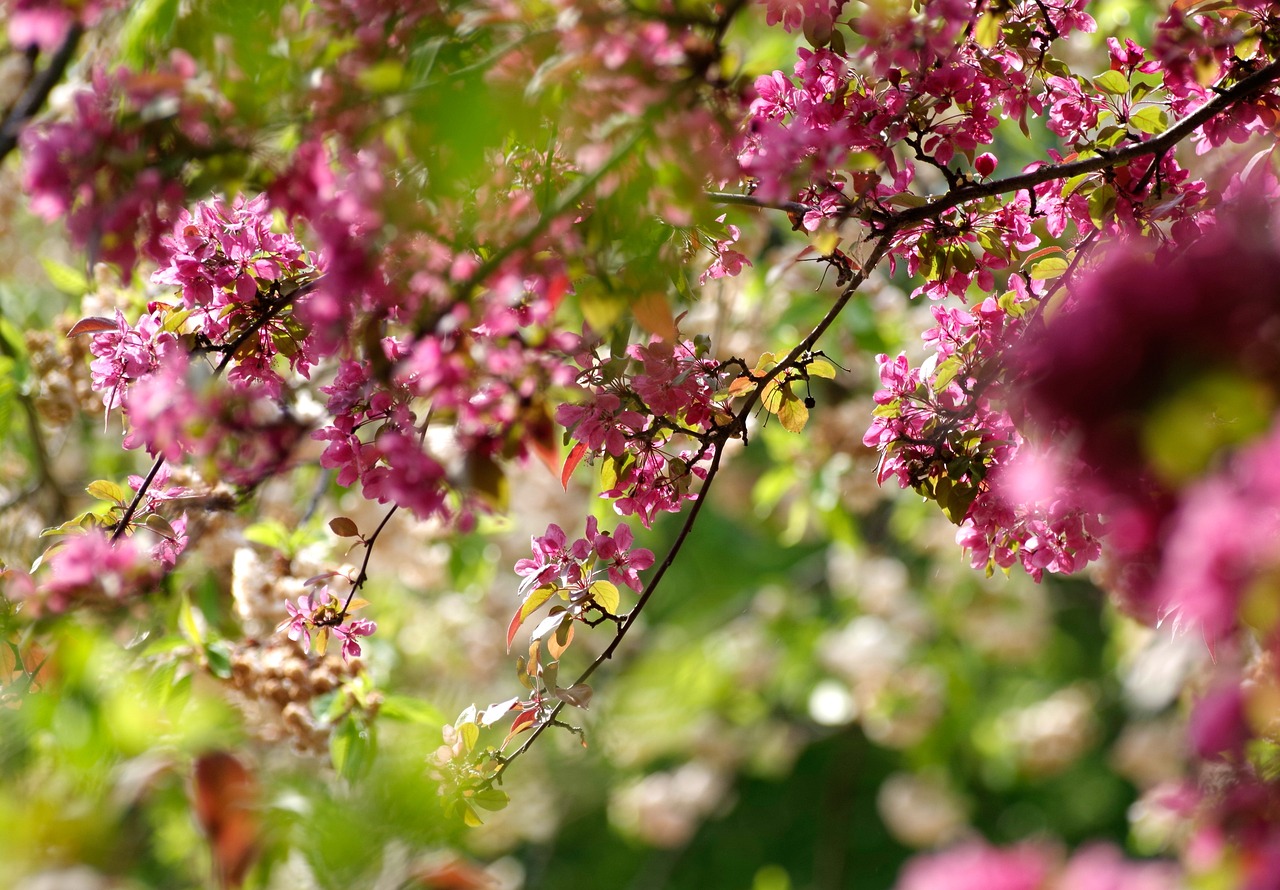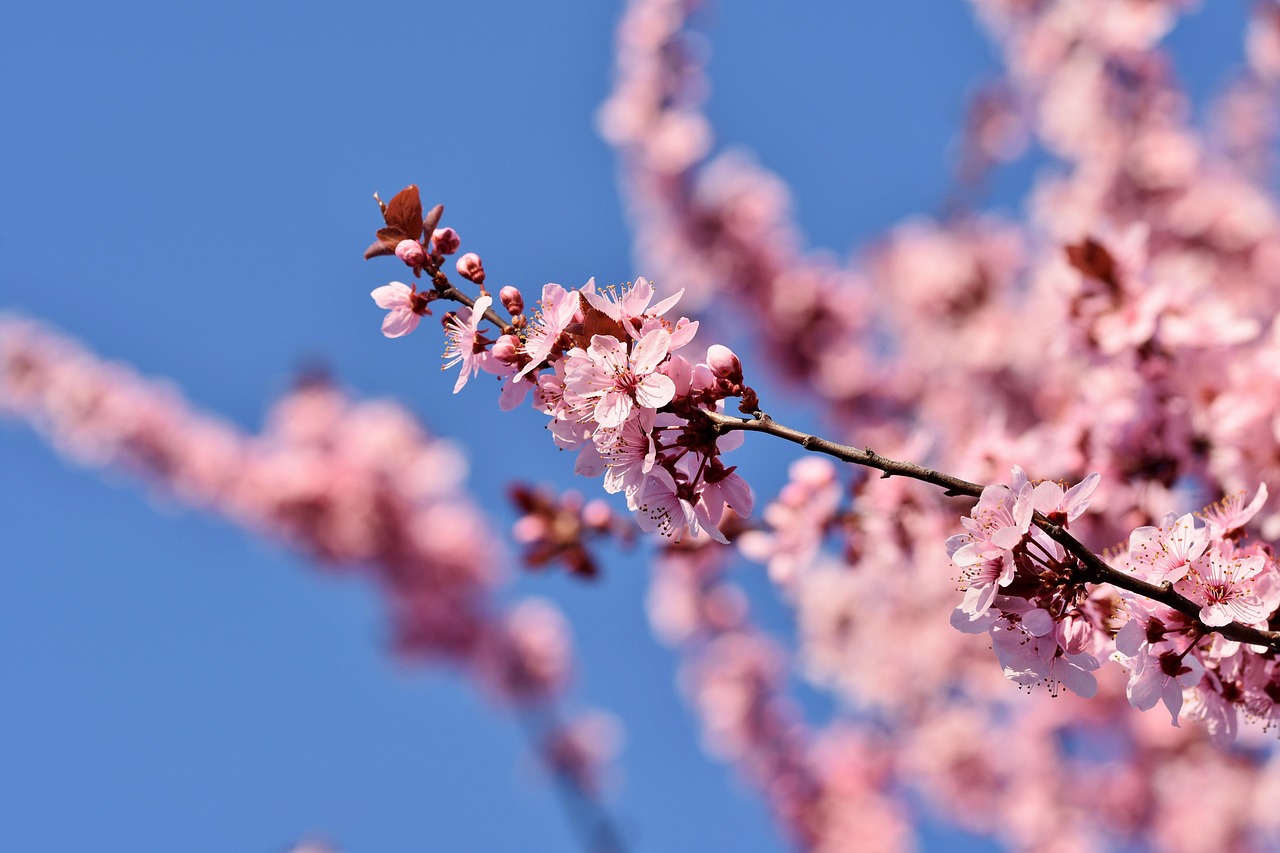Cherry tree pruning is essential for small-scale farming. It promotes healthy growth, improves fruit quality, and enhances tree structure. Proper techniques can increase yields and prolong the life of the trees, making it a key practice for successful cherry cultivation.
Pruning cherry trees is a critical aspect of maintaining their health and productivity. Small-scale farmers often face unique challenges, including limited space and resources. Therefore, understanding the best practices for pruning can lead to more efficient management of their orchards. Regular pruning encourages strong branching, reduces the risk of disease, and allows for better sunlight penetration, which is vital for fruit development.

Cherry trees generally thrive in well-drained soil with full sun exposure. They require careful attention to watering, fertilization, and pest control. However, pruning is one of the most impactful practices a farmer can undertake. It shapes the tree’s growth while ensuring that the branches are healthy and productive.
Types of Cherry Trees
Before delving into pruning techniques, it is important to recognize the different types of cherry trees commonly grown in small-scale farms. The two main categories are sweet cherries and sour cherries. Understanding these types helps in tailoring pruning practices to meet each variety’s needs.
| Type of Cherry | Description | Common Uses |
|---|---|---|
| Sweet Cherry | Larger fruits, sweeter flavor | Fresh eating, desserts |
| Sour Cherry | Smaller fruits, tart flavor | Baking, jams, juices |
Sweet cherries are often more delicate and require careful handling during pruning. Sour cherries are typically more resilient but still benefit from proper pruning techniques. Understanding the characteristics of each type will help farmers make informed decisions about their pruning strategies.

When to Prune Cherry Trees
The timing of pruning is crucial for optimal results. Generally, the best time to prune cherry trees is during the late winter or early spring before new growth begins. This timing helps minimize stress on the tree and reduces the risk of disease transmission. Late winter pruning encourages new growth and allows farmers to see the tree’s structure without the obstruction of leaves.
Pruning in summer can also be beneficial. It allows farmers to manage growth and remove any unwanted shoots that may compete with fruit-bearing branches. However, summer pruning should be done cautiously to avoid excessive stress on the trees.
Essential Pruning Techniques
There are several essential pruning techniques that small-scale farmers should consider when working with cherry trees. Each method has its specific purpose and benefits.

- Thinning: This technique involves removing entire branches to improve air circulation and light penetration. It helps in preventing overcrowding and ensures that the remaining branches receive adequate resources.
- Heading Cuts: This method shortens branches by cutting them back to a bud. It encourages bushier growth and can be used to shape the tree.
- Renewal Pruning: Older trees may require renewal pruning, where older branches are removed to encourage new growth. This practice rejuvenates the tree and improves fruit production.
Each technique has its place in a comprehensive pruning strategy. Farmers should assess their trees’ specific needs based on age, health, and growth patterns before deciding on a pruning approach.
Tools Needed for Pruning
Having the right tools is essential for effective cherry tree pruning. The following tools are recommended for small-scale farmers:
- Pruning Shears: Ideal for making clean cuts on small branches.
- Loppers: Useful for cutting larger branches that are too thick for shears.
- Saws: A small hand saw may be necessary for larger limbs.
- Gloves: Protect hands from cuts and scrapes while working.
Ensuring that all tools are clean and sharp is vital. Dirty tools can transmit diseases between trees, while dull blades can cause ragged cuts that may not heal properly.

Common Mistakes in Pruning
Even experienced farmers can make mistakes when pruning cherry trees. Recognizing these common errors can help avoid damage to the trees:
- Over-Pruning: Removing too much foliage can stress the tree and reduce fruit production.
- Poor Timing: Pruning at the wrong time can lead to increased susceptibility to disease.
- Ineffective Cuts: Making incorrect cuts can hinder growth and lead to unhealthy branches.
Avoiding these mistakes will help ensure that cherry trees remain healthy and productive. Proper knowledge and technique are essential for successful pruning in small-scale farming operations.
Benefits of Proper Pruning
Understanding the benefits of proper pruning can motivate small-scale farmers to adopt best practices. Pruning cherry trees not only enhances their appearance but also significantly impacts their productivity and longevity.
- Improved Air Circulation: Properly pruned trees allow air to flow freely through the branches. This reduces humidity in the foliage, decreasing the likelihood of fungal diseases.
- Better Light Penetration: By removing excess branches, sunlight can reach more parts of the tree. This is essential for photosynthesis and fruit ripening.
- Enhanced Fruit Quality: Pruning encourages the tree to focus energy on fewer fruits, resulting in larger and tastier cherries.
- Stronger Branch Structure: Regular pruning promotes strong, healthy branches that can support heavy fruit loads without breaking.
- Increased Yield: Healthy trees produce more fruit over time, leading to higher yields for small-scale farmers.
Pruning Techniques for Different Ages of Trees
The pruning techniques used can vary depending on the age of the cherry tree. Understanding these differences is crucial for effective management.
Young Cherry Trees
For young cherry trees, the primary goal is to establish a strong framework. Key techniques include:
- Formative Pruning: This involves shaping the tree into a desirable form. Aim for an open center or a central leader structure to ensure that light can penetrate.
- Removing Competing Leaders: If multiple branches grow upwards, select one as the leader and prune the others to encourage single-trunk growth.
- Encouraging Lateral Growth: Trim back primary shoots to encourage lateral branching, which will help develop a well-rounded canopy.
Mature Cherry Trees
Mature trees require different approaches as their growth patterns change. Consider the following techniques:
- Maintenance Pruning: Focus on removing dead or damaged branches while maintaining the overall shape of the tree.
- Thinning Out: If branches are crossing or crowded, thin them out to enhance air circulation and light penetration.
- Rejuvenation Pruning: For older trees that have become less productive, cut back older branches to encourage new growth. This should be done gradually over a few seasons.
Pest and Disease Management During Pruning
Pest and disease management is an integral part of the pruning process. By being vigilant during pruning, farmers can address issues before they become significant problems.
Pest Identification
Several pests can affect cherry trees. Common ones include:
- Cherry Fruit Fly: Larvae burrow into cherries, causing fruit to rot.
- Aphids: These small insects suck sap from leaves and can weaken the tree.
- Spider Mites: They thrive in dry conditions and can cause leaf discoloration and drop.
Disease Awareness
Cherry trees are susceptible to various diseases that can be exacerbated by improper pruning. Some common diseases include:
- Canker: This fungal disease leads to dead areas on branches. Pruning infected branches promptly can prevent further spread.
- Bacterial Blight: This disease causes wilting and dieback. Proper sanitation during pruning helps control bacterial spread.
- Powdery Mildew: A fungal disease characterized by white powdery spots on leaves. Proper air circulation from pruning can reduce humidity and limit its spread.
Post-Pruning Care
After pruning, providing appropriate care is essential for helping trees recover and thrive. Key post-pruning practices include:
- Watering: Ensure trees receive adequate water following pruning. This supports new growth and helps reduce stress.
- Fertilizing: Applying a balanced fertilizer can provide necessary nutrients that may be depleted during the pruning process.
- Pest Monitoring: Keep an eye out for any signs of pests or diseases after pruning. Early detection is crucial for effective management.
- Mulching: Adding mulch around the base of the tree can help retain moisture and suppress weeds.
Caring for cherry trees post-pruning sets the foundation for healthy growth and fruit production in the following seasons. By following these practices, small-scale farmers can maximize their orchard’s potential.
Seasonal Considerations for Cherry Tree Pruning
The timing of pruning cherry trees can significantly influence their growth and fruit production. Understanding seasonal considerations is essential for effective pruning practices. Different seasons provide unique opportunities and challenges for small-scale farmers.
Winter Pruning
Winter is often the preferred time for pruning cherry trees. During this season, the trees are dormant, which minimizes stress on the plants. Key points to consider during winter pruning include:
- Visibility: Without leaves, the tree’s structure is more visible, allowing for better assessment of what to prune.
- Reduced Disease Risk: The cold weather helps reduce the presence of pests and diseases that might be present in warmer months.
- Encouragement of New Growth: Pruning in winter promotes vigorous growth in the spring as the tree responds to the stress of pruning.
Spring Pruning
Spring pruning can also be effective but requires careful consideration. It is best done before flowering begins. Benefits and considerations for spring pruning include:
- Better Growth Response: Spring pruning can stimulate new growth as the tree begins its active growth phase.
- Avoiding Frost Damage: Pruning too late in spring may expose new growth to frost damage. Timing is crucial.
- Flower and Fruit Development: Pruning at this time can help shape the tree for optimal fruit production, but care must be taken not to over-prune.
Summer Pruning
Summer pruning is less common but can serve specific purposes. It involves light pruning during the growing season and offers advantages such as:
- Controlling Size: Summer pruning can help manage the size of the tree and its canopy, making it easier to harvest.
- Removing Suckers: Farmers can easily identify and remove unwanted growth that competes with fruit-bearing branches.
- Improving Airflow: Thinning branches in summer can improve air circulation, reducing humidity levels and fungal disease risks.
The Role of Soil Health in Pruning Success
The health of the soil plays a crucial role in the overall success of cherry tree cultivation, including their response to pruning. Healthy soil leads to healthy trees, which are better equipped to recover from pruning.
Soil Testing
Regular soil testing is essential for understanding nutrient levels and pH balance. Key aspects include:
- Nutrient Levels: Testing helps determine if additional fertilizers are required to support tree health.
- pH Balance: Cherry trees thrive in slightly acidic to neutral soils (pH 6.0 to 7.0). Correcting pH can enhance nutrient availability.
- Organic Matter: Ensuring adequate organic matter improves soil structure and water retention, benefiting tree growth.
Amendments for Soil Health
If soil tests indicate deficiencies, appropriate amendments should be applied. Common amendments include:
- Compost: Adding compost improves soil fertility and structure, promoting healthy root systems.
- Cover Crops: Planting cover crops can enhance soil health by preventing erosion and improving nutrient cycling.
- Lime or Sulfur: These amendments can be used to adjust soil pH based on test results.
The Importance of Training Young Cherry Trees
Training young cherry trees is a crucial practice that complements pruning. Proper training helps develop a strong structure and encourages healthy growth patterns that will benefit the tree throughout its life.
Training Methods
Several methods can be employed to train young cherry trees effectively:
- Central Leader Training: This method promotes a single upright leader with lateral branches spaced evenly around it. It is ideal for many sweet cherry varieties.
- Open Center Training: This method creates an open canopy structure, allowing light to penetrate throughout the tree. It is beneficial for sour cherries and some sweet varieties.
- Espalier Training: Training trees along a trellis or fence creates a flat shape, saving space and improving ease of access for maintenance.
The Role of Stakes
Using stakes can help support young cherry trees as they grow. Key considerations include:
- Staking Techniques: Use soft ties to avoid damaging the trunk while providing adequate support against wind and heavy fruit loads.
- Adjusting Ties: Regularly check ties to ensure they are not too tight as the tree grows. Adjustments may be necessary to prevent girdling.
- Taking Stakes Down: Remove stakes once the tree has established a strong structure, usually after a few years of growth.
Cultural Practices for Healthy Cherry Trees
Cultural practices play a vital role in maintaining healthy cherry trees and maximizing their productivity. These practices encompass various aspects beyond pruning, including soil management, irrigation, and pest control.
Irrigation Practices
Irrigation is crucial for cherry trees, especially during dry spells. Key points include:
- Drip Irrigation: This method provides consistent moisture directly to the root zone, reducing water waste and promoting healthy growth.
- Avoiding Overwatering: Monitor soil moisture levels to prevent root rot and other issues associated with excessive water.
- Irrigation Scheduling: Watering early in the morning or late in the evening reduces evaporation losses.
Pest Management Strategies
A proactive approach to pest management is essential for maintaining tree health. Practices include:
- Cultural Controls: Practices such as crop rotation and proper sanitation can minimize pest populations.
- Natural Predators: Encouraging beneficial insects can help control pest populations without chemical interventions.
- Pesticide Application: If necessary, apply pesticides judiciously, following all guidelines and regulations to minimize harm to beneficial organisms.
By integrating these cultural practices with effective pruning strategies, small-scale farmers can create a thriving environment for their cherry trees, leading to improved yields and quality over time.
Advanced Pruning Techniques
As small-scale farmers gain experience with cherry tree pruning, they may want to explore advanced techniques that can further enhance their tree management. These methods require a deeper understanding of tree biology and growth patterns but can yield significant benefits.
Precision Pruning
Precision pruning focuses on making targeted cuts to improve the overall health and productivity of the tree. This technique involves:
- Selective Thinning: Removing specific branches that compete with the main fruiting branches helps direct the tree’s energy more effectively.
- Targeting Fruit Spurs: Cherry trees produce fruit on spurs, which are short, stubby shoots. Identifying and preserving these while removing less productive wood can enhance yields.
- Adjusting for Growth Patterns: Understanding how different varieties of cherry trees grow can aid in making more informed pruning decisions, optimizing each tree’s potential.
Creative Shaping Techniques
Shaping techniques can also be applied to create aesthetically pleasing trees while maximizing fruit production. Some artistic approaches include:
- Bonsai Techniques: For smaller spaces, applying bonsai methods can create compact trees that produce fruit while remaining manageable in size.
- Fan Training: Training branches to grow horizontally can improve light exposure and fruit production, especially in shaded areas.
- Vertical Growing Systems: Utilizing vertical space through innovative training methods can increase the number of trees in a limited area.
Community and Resource Support
Small-scale farmers can benefit greatly from community support and resources dedicated to cherry farming. Engaging with local agricultural organizations and extension services provides valuable information and assistance in managing orchards.
Local Agricultural Extension Services
These services offer resources such as workshops, hands-on training, and expert advice tailored to local conditions. Key benefits include:
- Access to Research: Farmers can gain insights from current research on cherry cultivation, pest management, and soil health.
- Networking Opportunities: Connecting with other farmers fosters a community where knowledge and experiences can be shared.
- Technical Support: Extension agents can provide on-site assessments and recommendations for specific orchard challenges.
Online Resources and Forums
The internet provides a wealth of information for small-scale farmers. Online forums, social media groups, and agricultural websites are excellent places to find:
- Tutorials and Guides: Many platforms offer step-by-step instructions for pruning techniques and tree care.
- Expert Opinions: Farmers can ask questions and receive answers from experienced growers and horticulturists.
- Market Trends: Staying informed about market demands can help farmers make better decisions regarding crop production.
Sustainability Practices in Cherry Farming
Incorporating sustainable practices into cherry farming not only benefits the environment but also enhances the long-term viability of the orchard. Key sustainability practices include:
- Organic Farming: Avoiding synthetic pesticides and fertilizers can lead to healthier ecosystems and improve soil health.
- Biodiversity Promotion: Planting companion plants can attract beneficial insects and improve pollination rates while reducing pest populations.
- Water Conservation Techniques: Implementing drip irrigation systems minimizes water waste and promotes efficient usage, especially in drought-prone areas.
Final Thoughts
The art and science of cherry tree pruning are integral to successful small-scale farming. By understanding the various techniques and principles outlined in this article, farmers can enhance their orchard’s health, productivity, and overall sustainability. From timing pruning sessions to adopting advanced techniques and sustainable practices, the knowledge gained can lead to more fruitful harvests and a thriving agricultural business.
Cultivating cherry trees requires commitment and ongoing learning. As farmers continue to refine their skills and adapt their practices, they contribute to a more sustainable food system while enjoying the many rewards of their labor. Whether through community engagement or leveraging online resources, support is available for those looking to cultivate their passion for cherry farming into a successful venture.
In conclusion, effective cherry tree pruning is not just about cutting back branches but involves a holistic approach to tree care, soil health, pest management, and sustainable practices. With dedication and knowledge, small-scale farmers can reap the benefits of their efforts for years to come.
